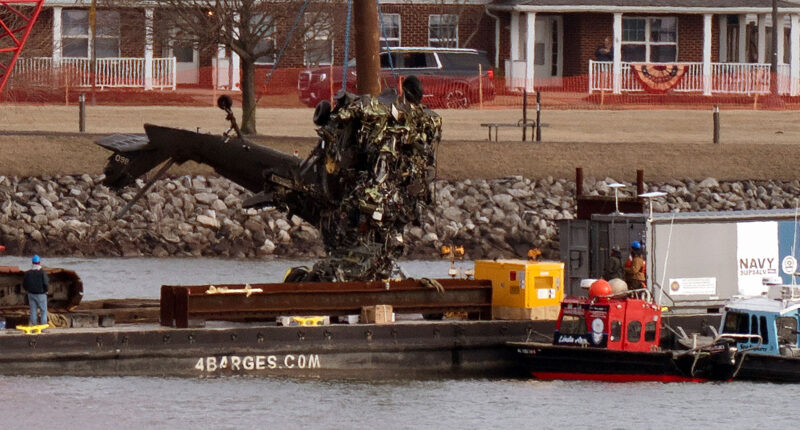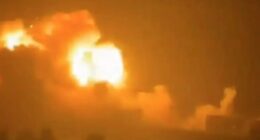A problematic radio frequency is suspected to have triggered the tragic mid-air collision between a commercial airplane and a military helicopter, resulting in the loss of 67 lives, according to the National Transportation Safety Board (NTSB).
After analyzing data pulled from the bottom of the Potomac River, the NTSB was able to give a full timeline of the moments leading up to the crash.




During a press briefing on Friday, NTSB Chair Jennifer Homendy disclosed the preliminary findings related to what could have led to the most fatal aviation accident since November 2001, when a aircraft crashed in a residential area of New York City, claiming 260 lives.
Homendy explained that the military helicopter failed to receive a critical control signal that was transmitted only 17 seconds before it collided with the American Airlines flight.
The Ronald Reagan Washington National Airport air traffic controller urgently asked the Black Hawk pilot to “pass behind the” plane.
However, the crew never heard the message because the helicopter’s microphone key was depressed at that exact moment.
Seconds before this, the air traffic controller had told the helicopter pilot that a passenger plane was “circling.”
According to Homendy, the Black Hawk was on a training mission, and the pilot was being tested on using night vision goggles and flying by instruments.
The crew was all wearing night vision goggles throughout the mission.
Also, before the helicopter entered the passenger plane’s flight path, the pilot said they were flying at 300 feet, while the instructing pilot said the helicopter was at 400.
“At this time, we don’t know why there was a discrepancy between the two,” Homendy said.
Homendy said they’re still investigating the apparent discrepancy, including whether the data they pulled from the water had been damaged.
HORROR TRAGEDY
Defense Secretary Pete Hegseth initially said an “elevation issue” with the US Army-operated helicopter’s training mission led to the fiery explosion.
Washington DC’s ink-black waters and frigid temperatures left passengers with little chance of survival, as first responders quickly realized the rescue mission was a recovery operation.
According to now-disturbing flight records, the Black Hawk was cruising through “helicopter alley,” which earned its name from being a pre-approved route for Army missions.
Children, world-class athletes, and a group of hunting buddies were all on the plane that came crashing into a deadly spiral.
A large portion of the flight from Wichita, Kansas, was coming from the US National Championships for ice skating.
Teen skaters Jinna Han and Spencer Lane boarded the plane with their mothers and their coaches – Russian couple Evgenia Shishkova and Vadim Naumov.
Little sisters Alydia and Everly Livingston, who were 11 and 14 years old, were also on the doomed flight.
Another victim, 30-year-old Kiah Duggins, was a former Miss Kansas contestant and Harvard Law graduate who previously worked as an intern for Michelle Obama.
















